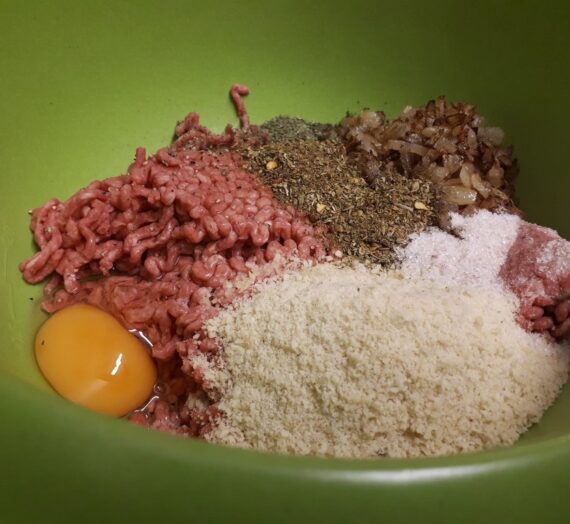When I first started a keto diet, the name of the game was avoidance: the avoidance of carbohydrates in the form of starches and refined sugars. It was not until recently, that I began to think of my diet in terms of addition.
At first, the penny hadn’t dropped that the fact meat and seafood contained little to no carbohydrates, was not merely helpful in plugging the calorie void that removing carbohydrates had left, but because they should be included in a healthy diet on their own terms. When anything too-carbohydrate laden was ‘dangerous’ for me with insulin resistance, I was eating meat and seafood because I saw these things as ‘benign’, as neither hindering my healing, but not especially helping it either. I think there were two main reasons for that: the first, is that it’s macro-nutrients that are stressed in communities following the classical ketogenic diet, as long as you are avoiding carbs, and getting in enough protein and fat, the sources of these macro-nutrients don’t really matter. The second, is that when it comes to getting in enough vitamins and minerals, its fruit and vegetables that have the biggest PR- and marketing-machine behind them. To the point where, people think that vegetables and fruit are the only way to get in key micro-nutrients, when more often than not, they are outclassed by the more bio-available nutrients in animal muscle and organ meats. Bio-availability meaning the ease in which the body is able to access or absorb and use vitamins and minerals for biological functions.
Maria Emmerich and Craig Emmerich in ‘The Carnivore Cookbook’ go to great lengths to turn the tide of mainstream thinking and to uphold meat and seafood as the most nutrient-dense foods on the planet. Beef outranks apples, blueberries and the ‘super-food’ kale gram for gram in Vitamin D, Vitamin E, Zinc, Magnesium, Potassium and 6 other vitamins and minerals*. They quite rightfully point out that instead of encouraging children to eat all their veggies, maybe we should be encouraging them to finish their steaks.
Therefore, I now not only view meat as a ‘neutral’ way to get in enough calories, fats and proteins, but I now prioritise it as I see it as the easiest and best way to get in essential amino acids, essential fatty acids and micro-nutrients without the drawbacks of other sources. ‘Essential’ in this context means substances that are essential to life, but ones the human body can’t produce itself and needs to get from external sources. For example, dairy might be a great way to get in fat if we are simply viewing it through the lens of macro-nutrients; however, if we view it in terms of optimum health, there are a number of proteins such as casein, which are known to cause inflammation in the human body.
Armed with this knowledge, I then set about learning more about meat. Growing up, my Dad was a vegan, and my Mum, Sister and I were essentially vegetarian with a hamburger thrown in here and there. Needless to say, I was pretty much starting from zero. I called in reinforcements in the form of Pat Lafrieda’s hardback book: Meat, Everything You Need to Know. Pat Lafrieda is one of America’s most celebrated butchers and the book does a good job of explaining where certain cuts of meat come from in the form of diagrams. To my novice eyes, this book still looks pretty advanced, but it inspired me to make the recipe detailed below. It’s what one would call a ‘coffee book’: large, unwieldy, visually pleasing but slightly impractical. But I was determined not to just enjoy this book for its aestheticism and to do my take on its lamb neck recipe.
*The others are Magnesium, Phosphorous, Iron, Selenium, Vitamin B6, Vitamin B12 and Niacin. Kale has more Calcium, Vitamin A, Vitamin C and Folate in milligrams per 100 grams than beef; however, the amount in milligrams alone might not be a fair measure as the bio-availability of nutrients from animals is far greater.

Ingredients
4 lamb necks**
2 tbsp. beef tallow or goose fat
Some fine sea salt
- Preheat the oven to 180 degrees C
- Rub the lamb necks with goose fat – my favoured cooking fat, but you could also use beef tallow – and then lightly sprinkle them with sea salt.

3. Preheat a cast iron skillet on a high-medium heat for a few minutes, until it starts smoking.
4. Add the lamb necks to the skillet and sear them for around 3 to 4 minutes on each side. If the lamb necks are sticking it means they haven’t yet seared: the meat will self-release when it’s done.

5. Place the lamb necks in a casserole dish large enough so they can be laid out in one layer. Add 2 UK cups of water (570 ml) or more so that the necks are just covered in water. Cover with a lid or foil.

6. Slow cook for 3 hours. You want to make sure that the liquid is simmering, not boiling, so increase or decrease the temperature of your oven by around 20 degrees accordingly.
7. Take the necks out of the oven and leave to rest – I left mine to rest for an hour. Then it’s ready to eat. I served mine in its own juices and kept the rest as some delicious lamb stock.
**My local butcher doesn’t sell lamb necks so I had to search further afield. I ordered mine from the family farm Gazegill Organics mostly due to their excellent Facebook marketing.

